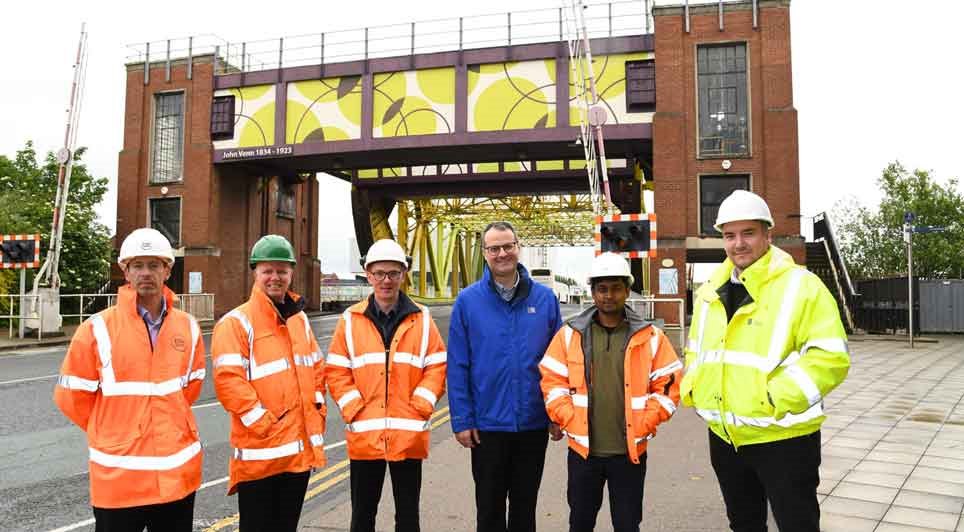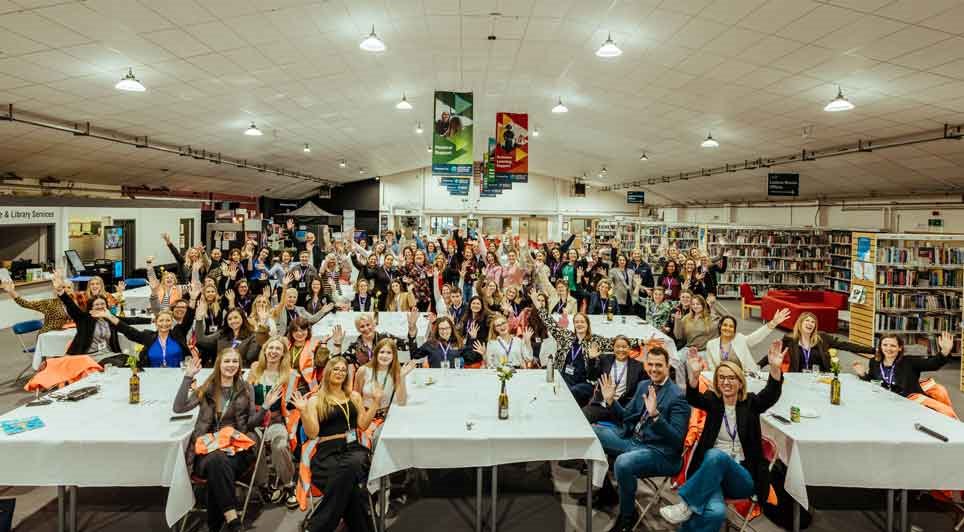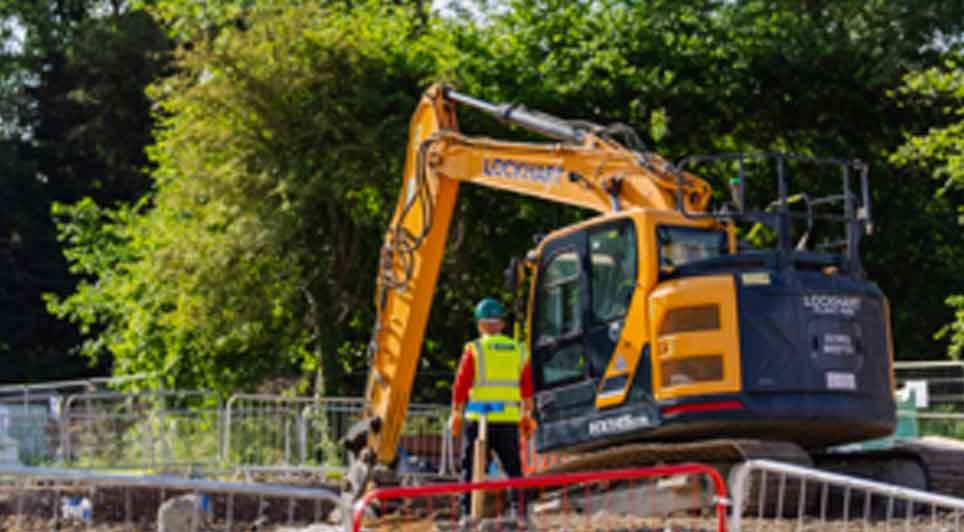Dimming
The first thing to remember is that the dimmer does not simply 'turn the power down'; it switches the light bulb off for a fraction of a second, several times a second.
The mains power supply is AC (Alternating Current) at 50Hz (50 cycles per second) so it effectively already turns the light off 100 times every second, passing zero volts twice each cycle. The residual heat in the filament of an 'incandescent' (i.e. the metal gets hot enough to emit light) bulb keeps the light going during the off periods, so there is no noticeable flicker.
To reduce the amount of light, the dimmer removes more and more sections from the on periods, effectively cooling the filament down. As well as reducing the amount of light produced the colour temperature is also reduced, leading to a dimmer and ‘warmer’ light. Again, there is enough residual heat in the filament to continue producing light during the off periods, mostly without flicker.
Where flicker comes from
Partly because of the wide capabilities of LED lighting, we forget that the light is produced in a different way. We remember using CFL light bulbs (the earlier 'energy saving' lamps) and having to wait for them to warm up. We also knew that they couldn’t be dimmed (apart from in very specialist setups). When it comes to LED lighting however, we have come to expect more.
Aside from the quality of light often being much better than CFL (still not always close to perfect), LED light sources turn on and off instantly. Therefore the circuitry powering the LED must stabilise this fluctuating voltage.
The circuitry in non-dimmable LEDs can usually (but not always) remove flicker. Because of the nature of dimming, Dimmable LEDs however need to be ready to flicker or pulsate in some way. Another bi-product of this is that there will usually be some degree of light being emitted, which may not be low enough for your needs even when dimmed all the way down. This can often be improved by selecting the most compatible setup available. Because there is no filament to cool down during dimming, LEDs maintain the same colour temperature throughout the range.
Types of dimming
We're mainly talking about ‘Mains Dimming’ here but it’s useful to know about other types too. 1-10V and DALI dimming are wired slightly differently. Power is fed to the LED driver and the dimmer is connected to this via a control cable. DMX dimming is a programmable protocol and normally used for multizone multicolour LEDs in architectural lighting. These other methods range in complexity and require a bit of planning, in exchange for very smooth dimming and scene-setting control.
Most residential setups are designed for Mains Dimming because the wiring is the same as it would be for a light switch; mains passes through the dimmer which cuts the waveform at various stages to introduce more and more off periods. Standard dimmers will do this on the 'Leading Edge' of the wave which leads to buzzing and only basic dimming capability. LED lights often prefer 'Trailing Edge' which requires an electronic dimmer and therefore often adds some programmability, to suit the LED.
Solving problems
Dimming compatibility is usually determined by both the dimmer module and the LED power supply. In 'retrofit' LEDs designed to fit where an incandescent bulb would have, the LED power supply is crammed inside the bulb (usually in the base) and cannot be replaced. Most other LED lights, such as downlights and LED tape, will have a separate power supply in the form of a driver or transformer.
The dimmer module on a standard rotary dimmer can also often be replaced (or re-programmed) to solve most problems. If not, the power supply or the light bulb can be replaced. Be sure to stay within the limitations of the dimmer (normally specified by number of LEDs and power range) and try not to mix LEDs.
Tried and tested
The Light Lab at d-lite demonstrates a wide range of light sources (bulbs, LED downlights and LED tape) and uses the Varilight V-Pro dimmer module. We can talk you though how we overcome flicker and you can rest assured that the solutions have been tried, tested and are trusted.
Now that we've gone through some of the reasons behind complications, let’s go through the simple steps to get the best out of dimming.
Select a dimming method
DALI will be best for large installations and wiring from scratch. Otherwise you may be set up only for Mains Dimming.
Choose 'Dimmable' LEDs
Let's get this obvious one out of the way but bear in mind that not all levels of 'dimmable' are the same.
Speak with d-lite about compatibility
We can often help specify the correct setup and, with the help of our Light Lab, demonstrate the available light sources.
Select the correct dimming system
A lot of this will have been covered during step 3. It's best not to use dimmers that haven’t been designed for Led lighting. Even if it appears to work, the user experience and the longevity of the LED are likely to be adversely affected.
Read the instructions
As we touched on in the main text, LED dimmers are often programmable. They will usually ‘sense’ and adjust to the optimum setup but it’s useful to refer to the instructions if dimming performance isn’t as expected.
Please do get in touch with us if you have any questions.
Email: knowledge@d-lite.co.uk
Website: d-lite.co.uk
Construction News
07/12/2021
Why Dimming Isn't As Easy As It Used To Be


02/07/2025
Construction is officially underway on the new Whitefield Community Fire Station, part of Greater Manchester Fire and Rescue Service's (GMFRS) £38 million Estates Improvement Programme.
Led by Robertson Construction North West, the project will replace the former fire station on Bury New Road with

02/07/2025
Hull City Council has officially appointed Esh Construction to lead a major repair and strengthening programme on Drypool Bridge, one of the city's key transport links.
The project will be delivered in partnership with engineering consultancy Mason Clark Associates.
Work will begin on the south s

02/07/2025
Award-winning housebuilder The Hill Group has announced record financial results for the year ending 31 March 2025, marking its second consecutive year of historic growth.
The company reported a turnover of £1.15 billion and a pre-tax profit of £90.5 million, completing more than 2,800 new homes a

02/07/2025
Women in Construction Anglia (WICA) and Suffolk Chamber of Commerce have voiced strong support for the government's new plans to increase the construction workforce by 100,000 people annually.
The announcement follows the launch of the first Construction Skills Mission Board, attended by Work and P

02/07/2025
Huddersfield Station will undergo a significant upgrade this autumn as part of the multi-billion-pound Transpennine Route Upgrade (TRU), with a full 30-day closure scheduled from Saturday 30 August to Sunday 28 September 2025.
The closure represents a major milestone in the delivery of a faster, gr

02/07/2025
Procurement Hub, part of Places for People (PfP), has confirmed a two-year extension of its flagship Major Projects Framework 2 (MPF2), extending its term until 2028 after achieving more than £300 million in social value since its launch in 2022.
Designed to deliver a more efficient, equitable, and

02/07/2025
Two Galliford Try employees have received commendations at this year's British Ex-Forces in Business Awards, recognising their outstanding contributions and leadership within the construction industry after transitioning from military service.
Pam McNeill, Business Assurance Manager for Galliford T

02/07/2025
The government has announced a landmark £39 billion investment to deliver around 300,000 new social and affordable homes across the UK over the next decade, in a major bid to tackle the housing crisis and provide secure housing for families and children stuck in temporary accommodation.
Under the n

02/07/2025
Hydrogen sulfide (H₂S) is one of the most dangerous gases found in industrial environments.
Colourless, highly toxic, and often referred to as the "silent killer", it's particularly hazardous because it can quickly deaden the sense of smell, giving workers a false sense of security.
Even a

02/07/2025
The Federation of Master Builders (FMB) has welcomed the Construction Leadership Council's (CLC) new Health, Safety and Wellbeing Strategy, describing it as a much-needed step toward driving change across the construction industry.
FMB Chief Executive Brian Berry joined over 140 industry leaders at
 UK
UK Ireland
Ireland Scotland
Scotland London
London











